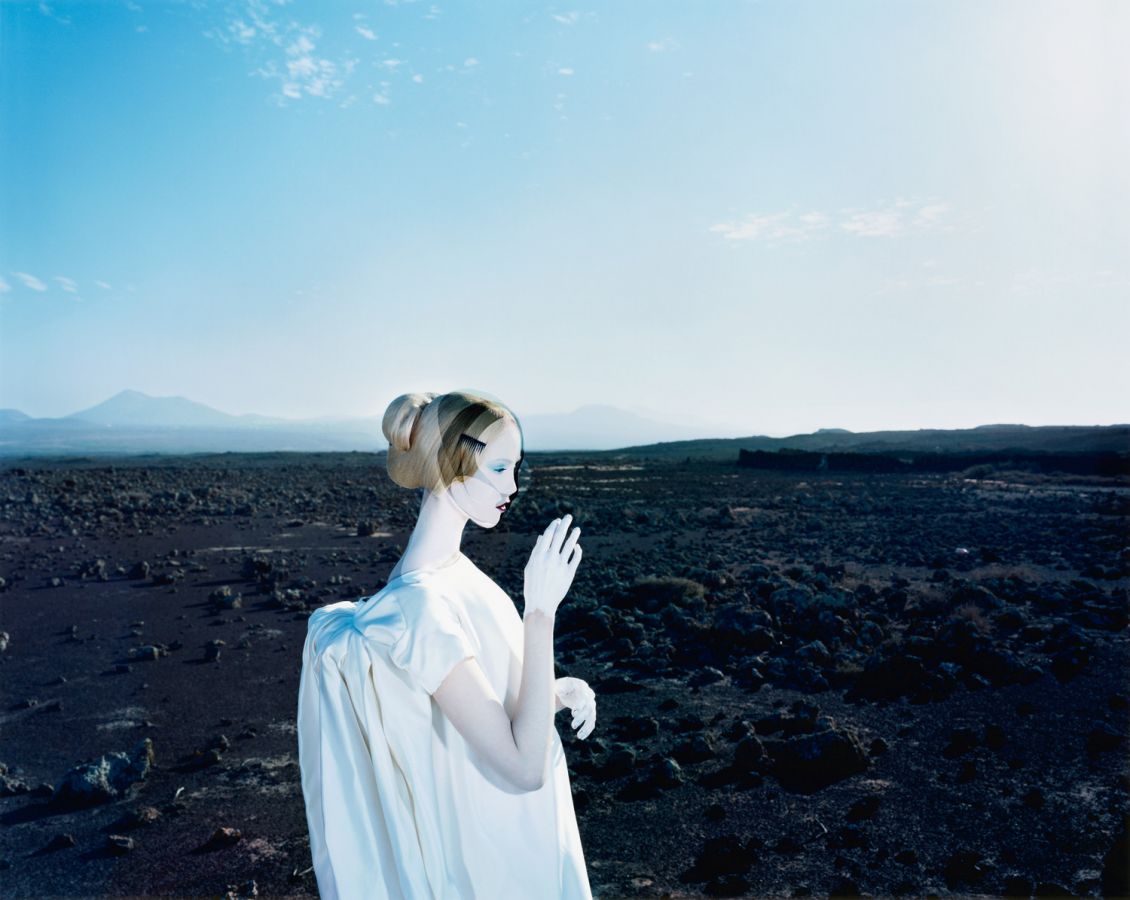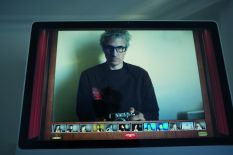You started as a photographer, then became a painter, and then returned to photography. Could you briefly retrace your artistic path for us?I started photography in 1980, as an assistant in advertising and fashion. It was not my visual culture - my favourite photographers were Eugene Smith, Cartier-Bresson, Robert Frank - but I quickly started to enjoy it and started shooting portraits and still lives for magazines. I worked for Jill magazine, Condé Nast Italy, then decided to take a break and took up painting. I returned to press photography 13 years later, in 2001. Photography is my main trade: I love working with people, and I started to miss that after a while. Then in the early 2000s, a lot of new press titles emerged, without much of a budget for production but with a desire to let people be creative, and I found that pretty exciting.
I’ve never actually had a preference for a particular magazine, but I do for relationships, and say so openly because it has helped me to grow and continue to learn and share, rather than end up stuck in the establishment which, although perhaps more rewarding financially, can trap or constrain you.
Your practice of photography often involves work after the shoot itself - cutting, pasting, etc. - on the negative. What potential do you see in this?As early as the 1980s, I became interested in scratching, engraving, cutting the negative itself. I’m well aware that the process of negative engraving is nothing new, but I believed my approach was a very personal one. I don’t cut systematically: I only do when I think I can add a third dimension, something to do with vibrations people emit. It’s a way of augmenting photography. When I work on a negative, I am in a way repenting for the original shot: the act of engraving the negative allows me to change what was originally captured, thus creating a second image. Once the negative engraving and cutting process has started, it has to lead somewhere. It’s a special technique, it can be risky, and that’s what I like about it: tampering with an image that is considered finished when shot to purposefully reconstruct it, with the permanent risk of destroying it altogether. It’s a moment of intense concentration - like walking the wire. It gets the adrenaline flowing.
You use a rather cool colour palette, often tending towards blue, with very white skin.My palette expanded when I started working outdoors. I seldom retouch my images: basically, everything is already there when I shoot. I pay a lot of attention to chroma. I always print my images in very cool colours and try to obtain very specific flesh and skin tones.
The landscapes and interiors you pick have in common a rather lunar look: desert landscapes, almost empty homes…Yes; the less signs there are of human intervention - houses, signage - the more I “penetrate” a universe, the more I feel I can create something timeless. I love grandiose expanses, where time seems to have stopped - Scotland, Ireland, or like here, on the volcanic lands of the Canary Islands.
Worlds reminiscent of Ray Bradbury?Bradbury, Isaac Asimov, Hoffmann are all part of my culture. Although deeply influenced by the cinema, science fiction and fantasy writers have left their mark on me and structured my imagination. With Hoffmann, for instance, a normal situation can suddenly tip into strangeness. There’s a bit of that reflex in the way I work: adding a tiny detail to upset the apparent normality - for example, when I shoot in a 100% Ikea interior, even the light switch can become intriguing!
Your characters are often lost in vastness, their faces like masks, their poses reminiscent of pantomime. How do you work with your models?I have shot a lot of images where the characters are far away, lost in their world. I play with reality to create a distance, often using plenty of make-up - I want the characters to remain somewhat enigmatic. My scenes are very posed, I put a lot of effort in the position of the head, the angle. Everything is done very slowly, very carefully, to create the impression that it’s both static and breathing, that the model is indeed posing, but that you can forget that.
even she seems to have forgotten herself…Yes. Perhaps the way I work is what conditions the model, allowing her to express the respiration: it’s not a “poseur’s” pose, it’s there for her to partake in her environment, to make her fully aware of the context she fits into.
Whoever the models I work with may be, it’s important to push them into their world and into mine: it’s my visual world, certainly, but they are visiting, embracing it. That’s perhaps the key feature of my work, more so than engraving and cutting. I think my approach of the model is very unique, especially for a fashion photographer – I’m far from glamorous in that respect!
Limited edition, numbered and signed.

 Jean-François Lepage does fashion photography on the razor’s edge. His images, with their bare compositions - solitary figures, no accessories, immersed in an endless lunar landscape or a vast, almost empty white house - express a brand of minimalism seldom seen in fashion photography. They are strangely motionless, as if suspended in a time and space where women are beings possessed by dreams, living in a world where the photographer, the model and the viewer’s imagination project and come together. On the razor’s edge again when the photographer’s hand often returns after the shoot to disturb and deconstruct the shot - slashing the negative, cutting and pasting to reconstruct a new, multiple image. His work expands the creative process in that it abolishes the fleeting snapshot moment in photography to draw the image into a parallel dimension, a state of consciousness where time and space are stretched to contain everyone’s fantasies.
Jean-François Lepage does fashion photography on the razor’s edge. His images, with their bare compositions - solitary figures, no accessories, immersed in an endless lunar landscape or a vast, almost empty white house - express a brand of minimalism seldom seen in fashion photography. They are strangely motionless, as if suspended in a time and space where women are beings possessed by dreams, living in a world where the photographer, the model and the viewer’s imagination project and come together. On the razor’s edge again when the photographer’s hand often returns after the shoot to disturb and deconstruct the shot - slashing the negative, cutting and pasting to reconstruct a new, multiple image. His work expands the creative process in that it abolishes the fleeting snapshot moment in photography to draw the image into a parallel dimension, a state of consciousness where time and space are stretched to contain everyone’s fantasies.